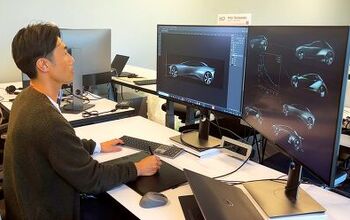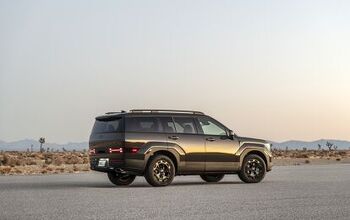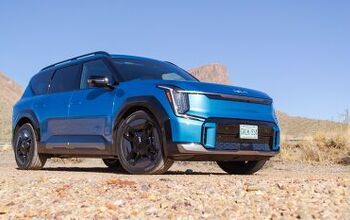Why Ford Dominates the Commercial-Vehicle Segment

Trucks are hugely popular in America, and for good reason.
Not only do they provide ample versatility for towing and hauling, they can also be outfitted with the latest driver aids and amenities, features that were exclusive to the luxury segment just a few years ago. This blend of capability and comfort has allowed them to replace – seemingly at an ever-increasing rate – the venerable four-door sedan.
But not all trucks are built for family duty or weekend warriors. Medium- and heavy-duty rigs earn their keep working long hours in difficult conditions. They’re often the very heartbeat of business across the country. Could you imagine a moving company without cube vans or a construction firm that didn’t have dump trucks? These vehicles are practically metonyms for the enterprises that own them.
Catering to the unique needs of these customers, Ford offers a huge range of commercial vehicles. It’s the only full-line manufacturer with truck offerings in classes 1 through 7, from a tiny Transit Connect van to models you need a commercial driver’s license to operate.
SEE ALSO: 2018 Ford F-150 Power Stroke Review – VIDEO
This broad portfolio has allowed them to dominate certain aspects of the market. Many people know Dearborn’s F-Series has been America’s best-selling pickup range for 41 years, but Ford has also been a leader with commercial customers for a third of a century, driving away with 43 percent market share, a figure they say eclipses their next four competitors combined. At the end of last year, they owned 70 percent of the Class 4 and 5 chassis-cab segment.
But any company can run its mouth, spouting sales stats and other figures. Listening has been another key to Ford’s commercial-vehicle success. “We pay a lot of attention to the customer,” said Kevin Koester, F-Series fleet and medium-duty brand manager, adding that they really take the time to learn the ins and outs of what these customers need to cater product offerings specifically to them.
And with the F-650 medium-duty dump truck pictured here, that means having an eight-cubic-yard bed and a crew-cab body, all with a gross vehicle weight rating less than 26,000 pounds, meaning a commercial driver’s license is not required to operate it. That means your average automotive scribe can pilot one of these towering trucks without fear of being arrested, just an ever-present worry of plowing into other vehicles and obstacles since it feels wider than a jackknifed tractor trailer.
Unlike competing companies, Ford offers customers two engine options in its medium-duty trucks. Aside from a Power Stroke diesel, you can also get a 6.8-liter V10. With three-valve-per-cylinder heads this spark-ignition dynamo is rated at 320 horsepower and 460 pound-feet of torque. For added flexibility, it can also be fitted to run on compressed natural gas or propane.
At first glance, putting a gasoline engine in such an immense truck seems foolish, as most customers would undoubtedly prefer the enhanced performance offered by a diesel. But Ford offers this powerplant for a very good reason. Koester explained the Power Stroke option adds about $8,000 to the vehicle’s price tag. Beyond that, diesels are fitted with special emissions-control systems that cost big bucks to service down the line.
Koester said the mix between gasoline and diesel engines is about 50-50 in this range of Ford trucks, meaning customers really seem to appreciate the choice.
Taking this F-650 dump truck for a quick spin around the streets of Detroit was quite an experience. For the most part, it felt like one of Ford’s much smaller Super Duty pickups, planted if a little ponderous. The towering body provided absolutely commanding views, making it feel like the driver’s seat was on a seventh-story apartment balcony.
Of course, the truck’s body is incredibly wide, meaning you have to navigate tight quarters with extreme caution. Unloaded, the ride bucks and kicks furiously, shaking the body and your internal organs like a bounce house full of preteens, but put a bit of weight in the bed – say, around 5,000 pounds of wood chips – and everything settles down and the ride becomes more than tolerable.
SEE ALSO: 2019 Ram 1500 Review – VIDEO
Acceleration while empty or laden is predictably leisurely, though the 10-cylinder engine is remarkably smooth and quiet, even while laboring, broadcasting none of the noise or vibration you’d usually expect from something this size. Maximum payload capacity for this particular F-650 was 11,335 pounds.
I delivered that prodigious load of mulch, which filled this truck’s bed nicely, to the playground at Wolverine Human Services in Detroit, a charitable organization that helps abused children. This was a perfect excuse to sample a vehicle not normally in the media fleet, all while helping do a little bit of good.
Underscoring its heritage, every one of Ford’s trucks are designed and built in America. Their powertrains, cabs and frames have all been developed in house, something that gives them absolute control over every aspect of these vehicles. The F-650 tested here was assembled in Avon Lake, Ohio.
Keeping these trucks running their best, more than 3,000 Ford stores across the country can provide support. Of that number there are more than 670 dedicated commercial-vehicle dealerships.
When asked if any rival companies or upcoming technologies worry him, Koester said everything keeps him up at night. “Within the last week I’ve had two dreams about trucks,” he added with a smile.
Discuss this story on our Ford Forum

Born and raised in metro Detroit, Craig was steeped in mechanics from childhood. He feels as much at home with a wrench or welding gun in his hand as he does behind the wheel or in front of a camera. Putting his Bachelor's Degree in Journalism to good use, he's always pumping out videos, reviews, and features for AutoGuide.com. When the workday is over, he can be found out driving his fully restored 1936 Ford V8 sedan. Craig has covered the automotive industry full time for more than 10 years and is a member of the Automotive Press Association (APA) and Midwest Automotive Media Association (MAMA).
More by Craig Cole



























































Comments
Join the conversation